The Florida Key Deer is an adorable subspecies of the white-tailed deer, in fact, the smallest one of all. They are unique to the lower Florida Keys, but sadly, their numbers are endangered.
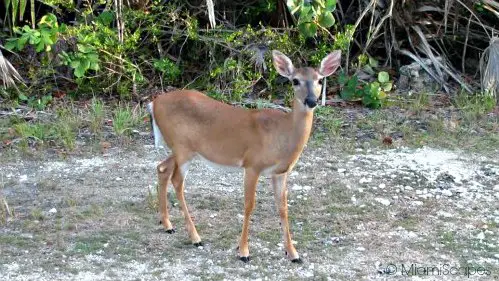
Their population is estimated to be close to a thousand now, and although that is a dramatic increase from a low of about 50 prior to the establishment of the Refuge and listing of the deer as endangered in 1967, they still face many perils.
Although conditioned to live in the wild, they have had to co-exist with man as their natural habitat gradually shrank. When you see them, first thing you notice is how unafraid they are, some even come to you looking for food. This is likely the result of having previously been fed, which is of course illegal and it endangers them by further encouraging them to approach people and vehicles looking for handouts.
Some Florida Key Deer Facts
How big are they?
Florida Key Deer are tiny, how tiny? Look at the size of this young buck when compared to the truck next to it:
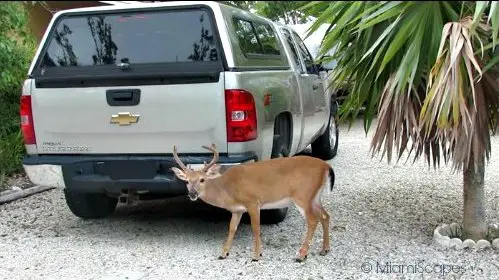
Females are even smaller, you might even mistake them for a large doggie. They measure about 24 to 28 inches at the shoulder and weigh an average of 65 pounds.
The larger males average about 80 pounds and fully grown can measure from 28 to 32 inches tall.
What do they eat?
Key deer are herbivores, they feed on over 100 different species of native plants. Their diet typically includes the local mangroves (all three types found in Florida) and thatch palm berries. You often see them in yards as well helping themselves to a variety of flowers and grasses.
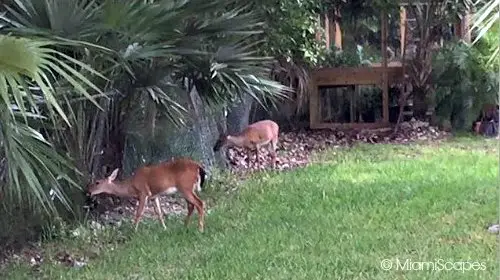
Where do Key Deer live?
They live in the lower Florida Keys spread around over 20+ different islands with the largest concentration in Big Pine and No Name Keys, just south of Marathon.
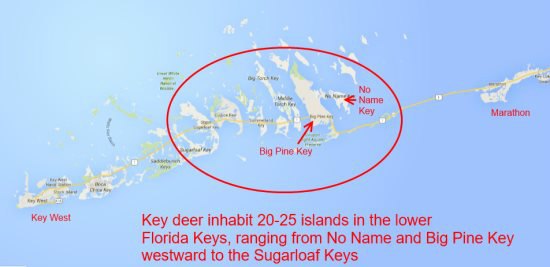
We find a range of habitats within these islands such as hardwood hammocks, pine rocklands, mangroves and wetlands. Of course, there is extensive development in the islands and the deer have learned to co-exist alongside.
How long do they live?
Males can live 9 years or so, females slightly less at 7 years.
Behavior Through the Seasons
Key deer breeding season occurs from the fall to early winter. Bucks start preparing by sharpening their antlers on trees and shrubs. The highest mating takes place in October.
The gestation period lasts 200 days, nearly 7 months, which means spring to early summer start welcoming the cute white-spotted fawns.
Bucks lose their antlers in February and March and start growing new ones right away. The antlers are covered with a velvet like coating. Towards the end of summer they have lost their velvet in preparation for the mating season.
Visiting the National Key Deer Refuge and Where to See the Key Deer
Let's start with what the National Key Deer Refuge is NOT. This is not a fenced-in park where Key Deer can be seen as a sure thing. Like all National Refuges, their aim is to protect and preserve the Key deer as well as other wildlife of the area, to maintain and enhance natural diversity and habitats, to educate as well as to enforce the rules that protect wildlife on all Refuge lands.
Florida Key Deer are found roaming freely throughout the Lower Keys, inside and outside the boundaries of the National Key Deer Refuge lands.
Your best chances of seeing Key Deer are at Big Pine Key and No Name Key where about 75% of the Key Deer population live (see map above).
The National Key Deer Refuge Visitor Center is located in Big Pine Key, and it is a good starting point with a wealth of information about the Key Deer and the area.
At first sight, this is not a "regular" visitor center like the ones we find at other National Parks, it is more or less hidden in a strip mall, (look for the Winn Dixie), but as other visitor centers, it is quite informative and you can get a map and directions to some of the popular areas for visitors: the viewing platform and the two nature trails.
What's most important if you want to see Key Deer though, is the time of day. Key deer are seen mainly early in the morning or late afternoon when the sun is setting and before dark.
During the day the deer are hiding in the shade resting, they come out to feed when it cools off and this is when you see them roaming on the side of the road...
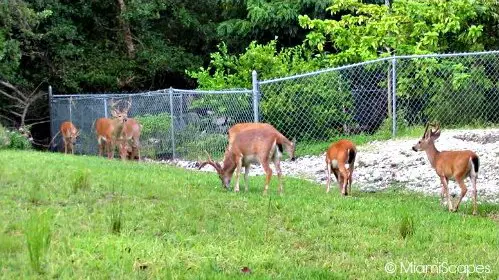
...or feeding in people's yards...
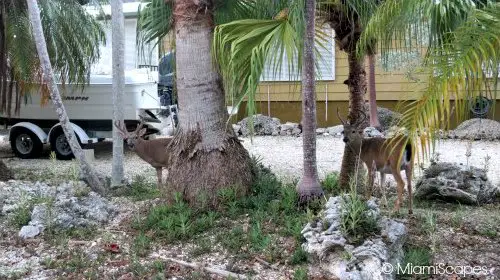
It is wonderful to see these adorable creatures in the wild. You will find them roaming all around the area, within the lands administered by the Refuge as well as private lands. If you come, please be mindful of people's privacy and property. Here's a short clip from one of our last sightings, we stopped at around sunset on our way to Key West. We found them right by the side of the road, resting, feeding, playing...
How You Can Help the Florida Key Deer
The Key Deer is in constant threat from road collisions and a shrinking habitat. Here's how you can help protect them!
- Slow Down! Collisions with vehicles is the leading cause of death of the Florida Key Deer. According to the Florida Wildlife Conservation Commission, road kills account for 70 percent of the annual mortality of Key deer. When approaching the Big Pine Key area slow down!
- Do not feed them! Besides being illegal, feeding the deer entices them to approach people and vehicles further endangering them.
- Volunteer at National Key Deer Refuge. If you have an interest in wildlife, enjoy working outdoors or with people, or simply want to contribute in some way, consider joining the Refuge's volunteer staff. More info here.
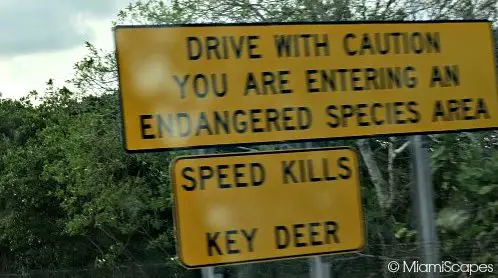
National Key Deer Refuge at a Glance
Where?: Visitor Center at 179 Key Deer Blvd., Big Pine Key, FL 33043 (At the Winn Dixie strip mall)
For info call 305-872-0774
Hours: The refuge is open year round during daylight hours.
The Visitor Center is open from 9:00 am to 4:00 Monday to Friday, and 10:00 am to 3:00 pm on weekends (when volunteers available)
Entrance to the Refuge: FREE
Public Use Opportunities: wildlife viewing, photography, pets allowed on leash only.
Not allowed: off-road vehicles, biking on Blue Hole and walking trails, weapons, collecting of plants, animals or any artifact from the refuge, and it goes without saying that feeding and disturbing wildlife are definite no no's.
More Info: Official Site of the National Key Deer Refuge.
Most Popular Everglades Excursions
Book with confidence! Free cancellation: Cancel up to 24 hours in advance to receive a full refund


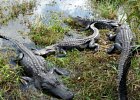
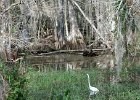
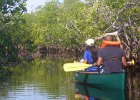
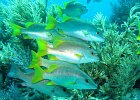
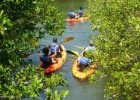
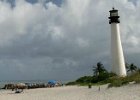

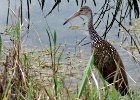

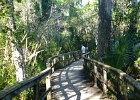
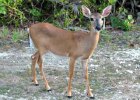






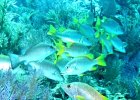

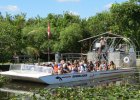






Send a Tip!
Got something to share? Let us know!